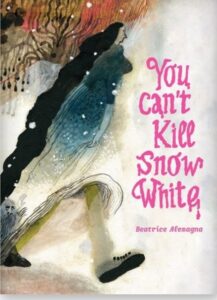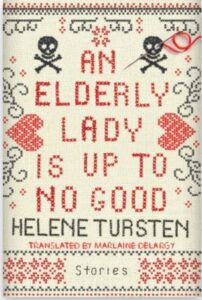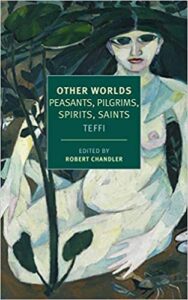You Can’t Kill Snow White by Beatrice Alemagna, translated from French by Karin Snelson and Emilie Robert Wong
Unruly, 2022
ISBN: 978-159270381
Available: Hardcover
Buy: Bookshop.org
You Can’t Kill Snow White puts a spin on the traditional story of Snow White by telling it from the Queen’s point of view. Alemagna reminds us of the darkness of the original Grimms’ tales and attempts to recapture and extend it by exposing the Queen’s evil plans, demented intentions, and murderous mind. We see her relishing the liver and lungs of the boar killed in place of Snow White that she believes are her victim’s and celebrating how “alive” and “renewed” she feels after feasting on them.
Although the idea of focusing on the Queen as narrator has great potential for enhancing the terror of the story and forcing the reader to feel the fear that children are protected from by modern re-tellings, Alemagna’s version does not go far enough. The fact that the focus on the queen cannot be maintained because she is not present at key points, like when the huntsman decides not to murder Snow White, causes breaks in the build up of tension. These breaks become longer and more difficult to bridge when the dwarves enter the picture and we are told by the queen that her heart is filled with “unspeakable pain” and she is full of “dread.” Are we meant to sympathize with her or to see her as so damaged that she is dangerous? Either way, the lack of development of the character does not shed much more light on her than we have had in the past.
It seems that rather than creating a new take on the story of Snow White, Alemagna has used it as an opportunity to showcase her art. The illustrations are plentiful and create a dark moodiness in a palette primarily of murky browns, reds, blues and golds with jolts of reds and pinks. The dwarves are Eastern European folkloric type figures, mainly bearded. The human beings typically suggest nightmares with elongated bodies, impossibly long hair, gaping mouths, and giant hands. There is much frenetic movement: sweeping, gorging, and screaming that is a much stronger portrayal of emotion and much more effective at eliciting it from the reader than the writing is able to do.
You Can’t Kill Snow White is published by Enchanted Lion Books under their new picture book imprint, “Unruly,” intended for older readers and adults. These publishers are on the right track by engaging the many readers who have, even since childhood, loved the way in which illustrations add depth and beauty to storytelling. What better way to draw out our deepest fears than to experience on the page the horrible pictures we can only imagine from descriptions?
Reviewed by Nova Hadley







Follow Us!